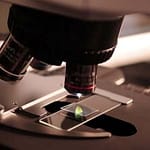A Comparison of Laboratory culture methods and antibody assays to assess the Prevalence of Infection by Mycobacterium avium subsp. paratuberculosis in the blood of patients with Crohn’s disease and control subjects.
Investigators:
Todd Kuenstner, M.D., M.S. and Raghava Potula, Ph.D. (Temple University)
Ira Shafran, M.D. (Shafran Gastroenterology, Florida)
Tim J. Bull, Ph.D. (TiKa Diagnostics, England)
Irene R. Grant, Ph.D. (Queen’s University, Northern Ireland)
Horacio Bach, Ph.D. (University of British Columbia, Canada)
Peilin Zhang, M.D., Ph.D. (PZM Diagnostics, West Virginia)
Saleh Naser, Ph.D (University of Central Florida)
Abstract:
 Crohn’s disease, a chronic disease affecting the gastrointestinal tract, is generally considered an autoimmune disease. It has been theorized that Mycobacterium avium subspecies paratuberculosis (MAP) plays a role in the development of Crohn’s. In livestock, especially cattle, MAP is the causative factor for a diarrheal disease called Johne’s disease. MAP infection occurs at a higher prevalence in patients with Crohn’s compared to healthy controls, but the current blood culture methods have required 3 to 6 months for growth of the organism and the current method is of relatively low reproducibility. Our study seeks to confirm that Crohn’s disease patients have a significantly higher rate of MAP infection than individuals that do not have Crohn’s, and to compare more recent rapid culture methods from multiple laboratories. Consenting study patients will provide a blood sample, which will be tested for MAP in the above laboratories that will be blinded to the identity of the participants.
Crohn’s disease, a chronic disease affecting the gastrointestinal tract, is generally considered an autoimmune disease. It has been theorized that Mycobacterium avium subspecies paratuberculosis (MAP) plays a role in the development of Crohn’s. In livestock, especially cattle, MAP is the causative factor for a diarrheal disease called Johne’s disease. MAP infection occurs at a higher prevalence in patients with Crohn’s compared to healthy controls, but the current blood culture methods have required 3 to 6 months for growth of the organism and the current method is of relatively low reproducibility. Our study seeks to confirm that Crohn’s disease patients have a significantly higher rate of MAP infection than individuals that do not have Crohn’s, and to compare more recent rapid culture methods from multiple laboratories. Consenting study patients will provide a blood sample, which will be tested for MAP in the above laboratories that will be blinded to the identity of the participants.
The study will collect 210 blood samples, 60 from adult Crohn’s disease patients and 150 adult controls. In Stage I, the blinded samples will be tested in the laboratories of Timothy Bull, Irene Grant and Saleh Naser using culture and PCR. In Stage II, antibody studies will be performed in the laboratories of Horacio Bach, Peilin Zhang and Raghava Potula.
The total approximate amount to complete the study is $40,000, which will pay for the out of pocket costs of each laboratory and sample transportation costs. The study investigators have not requested compensation for their time or expertise, and no overhead institutional costs have been sought. Collection sites will be compensated for their labor and supplies.
Objectives:
The primary objective is to determine whether Crohn’s disease patients and some normal controls have a MAP infection by confirming that a proportion of culture isolates from subjects in either group are MAP by whole genome sequencing. The prevalence of MAP infection will be determined for both groups.
The secondary objectives are to compare the recovery rates of 3 different MAP culture methods and to compare 3 different MAP antibody assays in a population of Crohn’s disease patients and controls.
An additional secondary objective is to correlate the results of the MAP cultures and MAP antibodies with Crohn’s disease activity using CDAI and other measures of Crohn’s disease severity.
The results will be published on HumanPara.org and in an industry journal when the study is completed.
Berkeley Conference 2018 Update
Journal Article and Results Now Available!
Cytokine Analysis of MAP Positive Blood Cultures in Crohn’s Subjects
